How does alcohol cause weight gain? Weight loss tips
July 22nd, 2021
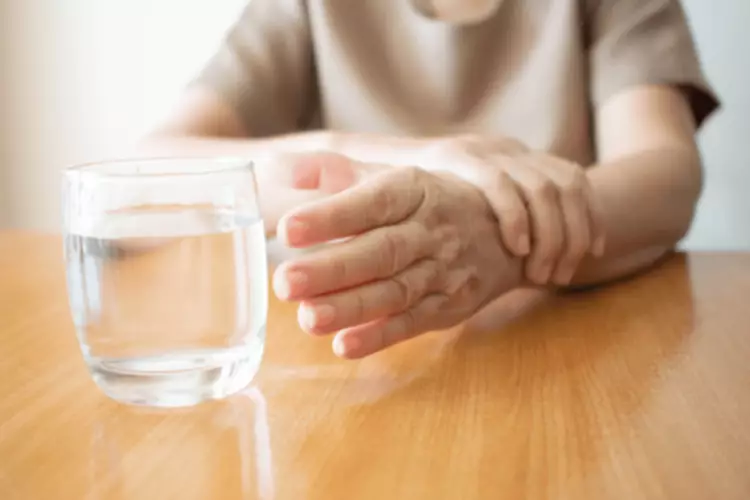
Six ounces of ginger ale has 62 calories, and the same amount of cranberry juice has 116 calories. Weight loss — or, more appropriately, fat loss — has to do with a number of factors, including genetics. But at its core, it relies on creating a calorie deficit, or consuming fewer calories than you expend each day. When you remain in a calorie deficit for a period of time, can drinking vodka make you gain weight your body will begin to burn fat stores for energy. Vodka and weight loss aren’t compatible when you drink too much.
What Alcohol Is in Bud Light Seltzer? Real Answer

However, more studies are needed to validate the relationship between moderate drinking and these benefits. There’s not much sugar in vodka—in fact, it contains about 0.9 grams of sugar for every 1.5 ounces of vodka. That’s compared to beer, which has the same serving size but 13 grams of sugar per serving! So if you worry that you’ll be piling on the pounds with sugary drinks, this could be why vodka is your best bet—it has only trace amounts of sugar. A drink serving is 12 oz of beer, 5 oz of wine, or 1.5 oz of hard liquor such as scotch, gin, tequila, or vodka.
- Ways that your standard hangover cures won’t even begin to touch.
- A high alcohol intake may cause weight gain by increasing your calorie intake and appetite.
- Alcohol may dangerously lower blood sugar if you don’t eat or take diabetes medication.
- So just one shot of vodka will keep you from burning fat for over an hour.
- So you’ve had a rough night out, and the only remedy is to stress eat donuts, burgers, and crisps all afternoon while lying on the couch under a blanket of shame.
RELATED: ‘I Ate Carbs For Breakfast Every Day For A Week—Here’s What Happened’
- Not only does alcohol decrease inhibitions that might otherwise help you regulate a desire to overeat, it appears to stimulate parts of the brain that evoke hunger.
- But if you aren’t able to eat right when drinking, it’ll significantly affect how you accumulate fat.
- Consuming approximately 3,500 extra calories over your daily needs leads to a pound of fat gain, according to Mayo Clinic.
- However, the alcohol bloat will last only 1-3 days if you get right back on your diet and exercise routine.
- Check your blood sugar, whether you’re drinking or not, if you have any of these symptoms.
- The more you drink, the more you wake up to increasingly unstable moods and stress, leading you to drink (and eat) more.
Force yourself to choose nutrient-dense food, lots of water, and get moving – even if it’s just a walk for fresh air. If you want to fight that post-drinking bloat and digestive distress, one of the best things to do is get back on track as soon as possible. Your metabolism plays a key role in how alcohol affects your weight.
When You Drink Vodka Every Night, This Is What Happens To Your Body
Several studies suggest that consuming alcohol before or during a meal does not influence the amount of food eaten in that meal, despite increasing the energy density of the meal 5. Thus, individuals do not appear to compensate for the added energy from alcohol in the short-term, and alcohol appears to have little effect on satiety 5. If you go overboard, you risk a hangover and the fatigue, headache and other characteristic symptoms. Fatigue is also a trigger for poor food choices and giving into cravings. Eating a greasy breakfast to cure a hangover is a myth, but many people do it anyway and end up consuming hundreds of extra calories. Then, after dragging yourself through the day, you’re going to feel a lot more Halfway house like hitting the couch than hitting the gym.
Drinking Vodka for Weight Loss
Your body will feel fuller and you’ll boost your metabolism by eating high protein foods. This is the trick to drinking alcohol and still losing weight (10). The next most significant tip is keeping healthy habits and making sure you don’t eat bad foods with alcohol intake.
Temporary Weight Gain After Drinking Alcohol: The TL;DR

Additionally, alcohol is a diuretic, meaning you lose more body water, so you’ll likely need to go to the bathroom more frequently and will often sweat more too. Talk with a doctor if you have any questions about alcohol, weight, or limiting your alcohol intake. The exact number of calories can vary widely by drink and serving size.
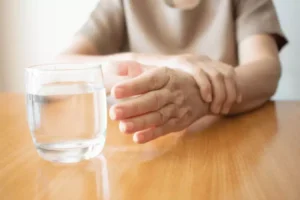
You could damage your organs if you drink vodka every night in excess

The trillions of microbes in your colon and large and small intestines are critical to proper digestion. They also help fend off inflammation and support healthy metabolism. Cirrhosis, on the other hand, is irreversible and can lead to liver failure and liver cancer, even if you abstain from alcohol. And that’s on top of the toll that alcohol use can take on relationships, not to mention the potential for financial strain and legal troubles. So you’ve had a rough night out, and the only remedy is to stress eat donuts, burgers, and crisps all afternoon while lying on the couch under a blanket of shame. You’re stressed, so you’ll likely crave junk food to feel better again.
Posted in Sober living | Comments Off on How does alcohol cause weight gain? Weight loss tips
Alcohol and Dry Eyes: Is There a Connection?
July 12th, 2021
Being mindful of alcohol consumption can reduce this sensitivity, helping you enjoy daylight activities without discomfort. After withdrawal, alcohol addiction treatment should involve therapy to address root issues that led to alcohol abuse. Chronic alcohol consumption can contribute to dry eye syndrome, causing discomfort, irritation, and a gritty sensation in the eyes due to decreased tear production. If you experience persistent eye problems due to alcohol consumption or have experienced significant vision changes, visit an eye care practitioner immediately.
How Alcohol Abuse Can Lead To Dependence
Remember, seeking help and treatment for alcohol abuse is a crucial step towards improving your overall health, including the well-being of your eyes. Don’t hesitate to reach out to professionals and support networks who can guide you on your journey to recovery and provide the assistance you need. Over time, chronic alcohol abuse may increase the risk of developing glaucoma, vision loss, and involuntary movements of the eyes. If you suspect that your alcohol consumption might be impacting your vision, it’s essential to prioritize your eye health. Regular eye examinations can help catch potential issues early on, allowing for timely intervention and preventing the progression of optic nerve damage. ‘Alcoholic eyes’ is often used to describe the bloodshot eyes of heavy drinkers.
While the idea of quitting alcohol cold turkey might seem straightforward, it can be risky and physically demanding. Sudden withdrawal can lead to severe health complications, which is why having professional help is not just helpful—it’s necessary. Alcohol can mess with color perception by affecting the brain areas responsible for interpreting colors. This might not only be disorienting but can also impact activities that rely on accurate color vision, like interpreting traffic lights or cooking. Limiting alcohol intake can help maintain proper color vision and avoid these potentially hazardous misinterpretations.
Treatments for eye-related issues with alcohol
This slows metabolism as the body prioritizes getting rid of alcohol calories, leading to weight gain. Excessive alcohol use significantly impacts skin health, often leading to visible dryness, redness, and inflammation. Alcoholic face is a broad way to describe facial changes from excessive drinking.
Understanding Alcohol Eyes: Symptoms and Causes
Your dry eye symptoms may persist if you stop drinking or experience alcohol withdrawal. Many of these conditions can cause significant visual changes, unusual eye movement, and vision loss. Tears that evaporate too quickly can’t meet the eyes’ functional needs. This results in inflammation and irritation, causing symptoms of dry eye. A 2021 population-based study of more than 77,000 people found that 30% of those who consumed alcohol reported symptomatic dry eye.
Dehydration is a biggie when it comes to dry skin, puffiness, and management of skin conditions like psoriasis or pathway to recovery hazleton rosacea. Drinking too much alcohol enlarges blood vessels in your face, resulting in facial redness and changes in skin tone and texture. Moderate, or acceptable drinking levels, are defined as drinking up to one drink a day for women and up to two for men. Some studies have found an association between heavy alcohol consumption and the development of age-related cataracts.
Other Eye-related Symptoms Associated with Alcohol Abuse
- When this happens, you may have blurred vision or double vision due to weakened eye-muscle coordination.
- Post-Traumatic Stress Disorder (PTSD) and substance abuse often coexist in a complex, self-perpetuating cycle that can be difficult to disrupt.
- This condition specifically targets the optic nerve, causing irreversible damage.
- While there is still a lot of research to do to determine what causes this specifically, it is typically the result of alcohol’s ability to speed up the natural aging of the eyes.
- Along with liver, breast, and pancreatic cancer, alcohol abuse also increases the risk of skin cancers such as basal cell carcinoma, squamous cell carcinoma, and melanoma.
Alcohol promotes dehydration, which increases the salt level in blood and tears. The higher the concentration of salt in your tears, the faster they’ll evaporate when you blink and distribute them across the surface of your eye. This tear film, which spreads each time you blink, should stay on the eye long enough to support clear vision, provide protection, and keep the eye lubricated for the eyelids. Drinking alcohol can cause dry eyes, and when dry eyes become a persistent problem, you may be living with DED. If you or a loved one struggles with an addiction to alcohol or drugs, help is available.
In the case of alcoholic face, it’s all about cutting back on drinking alcohol. Reach out to your doctor or local addiction support services to discuss your concerns and explore treatment options. There are various resources available to help individuals struggling with alcoholism, including counseling, support groups, and rehabilitation programs. Taking the first step towards recovery is a courageous decision that can pave the way for a healthier, brighter future. Fortunately, most short-term signs of alcoholic eyes and eye pain after drinking should improve as the body rebounds from alcohol exposure. The way your eyes look is important, but your eyes are also suffering from those toxic levels in other ways.
Posted in Sober living | Comments Off on Alcohol and Dry Eyes: Is There a Connection?
Addiction vs Dependence: Whats the Difference? Delphi
December 2nd, 2020
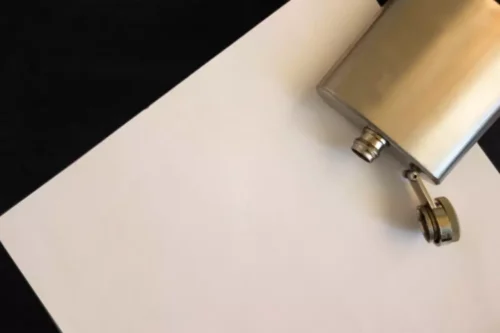
For example, individuals who are addicted to prescription drugs will take more than the prescribed amount and for longer than its intended use. They will tend to be secretive about their use and will need the drug to function normally. The term “addiction” has been somewhat controversial history over the years. In the 1980s, the American Psychological Association sought to change this definition in the DSM (the Diagnostic and Statistical Manual of Mental Disorders).
- After a careful vote, “addiction” was changed to “substance dependence” and it remained that way until the DSM entered its 5th edition in 2013.
- As a consequence, the diagnostic category of “substance dependence” stayed with us through the DSM-IV, until it was dropped in 2013 in the DSM-5, along with the diagnostic category of “substance abuse.”
- If you think you have a dependence or addiction, contact a treatment provider today for help.
- However, these recent changes mean that “dependence” now includes both physical and physiological dependence (in terms of tolerance and withdrawal symptoms).
- Rather, the manual defines substance abuse disorders as mild, moderate, or severe.
History of the Terms Dependence and Addiction
It’s important to note that people can experience withdrawal without having an addiction, and conversely, someone may have an addiction without necessarily experiencing withdrawal symptoms. What starts as a choice can quickly spiral into a situation where the individual feels powerless to stop, even in the face of severe consequences. Recognizing the signs of addiction is essential for distinguishing it from dependence and other related conditions. Addiction is a chronic, relapsing disorder characterized by compulsive drug seeking, continued use despite harmful consequences, and long-lasting changes in the brain. These changes primarily occur in the brain’s reward system, particularly within areas like the nucleus accumbens and the prefrontal cortex. However, if an individual takes an antidepressant of this category for long enough, they can experience negative symptoms or experience discomfort when they stop—especially if they stop abruptly.
- That terminology was problematic because in biology — the study of organisms — dependence refers to a physical adaptation to a substance.
- If you find yourself struggling to control your alcohol or drug use, you’re not alone.
- It’s characterized by intense cravings and a preoccupation with obtaining and using the substance, often driven by pleasurable sensations or relief it provides.
Addiction and Dependence for Illicit Drugs
Rather than seeing relapse as a failure, it can be viewed as part of the recovery journey. It provides an opportunity to identify triggers and build strategies for long-term recovery. In the event of a relapse, there are valuable lessons that can help strengthen a person’s motivation and future attempts at sobriety.
Physical Dependence Vs. Mental Dependence
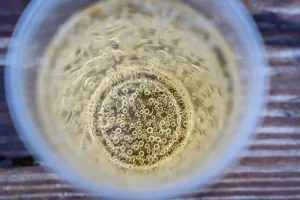
Since he can’t stop even though he wants to, his dependence has turned into an addiction. Even if you only take drugs as prescribed, it’s important to monitor your substance use. If that substance dependence has a negative impact on your life, you could be at risk of addiction.

With alcohol addiction, or severe alcohol use disorder, a person finds it difficult to stop drinking much of the time, not only https://ecosoberhouse.com/article/how-alcoholic-parents-affect-their-children/ in certain situations. Mental dependence is when a person relies on a substance or behavior to cope with emotional challenges. For example, a person may drink alcohol when they feel stressed but otherwise feel no compulsion to drink.
‘Substance Abuse’ Vs. ‘Substance Dependence’
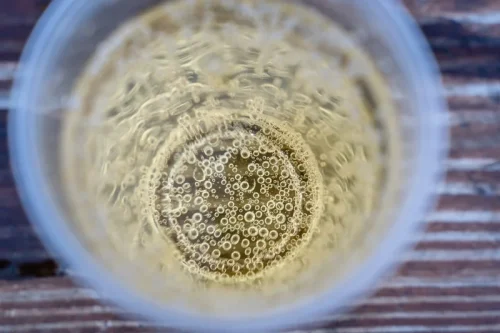
Dependence, on the other hand, is characterized by a physical and psychological loss of control due to substance abuse. For example, physical dependence occurs when the body is reliant on the chemical interactions caused by a drug or substance. In this case, medical support may be required to help wean the individual off the drug. However, in this state, a person can be physically dependent on the medication, but not addicted. In summary, our clinical experience with baclofen suggests that it definitively reduces alcohol craving and alcohol consumption in those with alcohol dependence at least in the early period of treatment.
- This means they’ll experience withdrawal symptoms if they decrease the dose or halt use altogether, or they’re unable to experience the effects of the drug at the dose they’ve become used to, known as tolerance.
- A treatment center will attempt to verify your health insurance benefits and/or necessary authorizations on your behalf.
- For example, a person with a caffeine dependence who stops drinking coffee may have withdrawal symptoms for a few days but then feel better.
- It’s like trying to steer a massive ship – changes in direction take time and effort.
This change also provided clarity, since previously, the definition of dependence was narrower and only referred to physiological dependence. Caffeine is an example of a common substance that causes physical dependence. If you can’t function properly in the morning without your cup of coffee, it could be that you are caffeine-dependent. When you miss your morning cup, you might develop physical withdrawal symptoms, like a headache, fatigue, difficulty concentrating, and more. Chemical dependency is broader and may include other physical signs like an increasing tolerance to the substance, or withdrawal symptoms when someone tries to quit or cut down on using it. To reiterate, the DSM-5 dropped the categories of “substance dependence” and “substance abuse,” and so the claim that substance abuse disorder is the preferred term for drug addiction is inaccurate.
After a careful vote, “addiction” was changed to “substance dependence” and it remained that way until the DSM entered its 5th edition in 2013. Some people do well at home with regular doctor visits and support groups. And sometimes it takes more than one type of treatment to be successful.
It often starts with addiction vs dependence experimentation out of curiosity or social influence, such as peer pressure. It might also begin through prescribed medication, like when a person is prescribed painkillers for an injury or medical procedure. Addiction is primarily a behavioral and psychological issue, often linked to changes in the brain’s reward system. Dependence can occur with the use of certain medications, such as painkillers or antidepressants, even when taken as prescribed. It reflects a physiological adaptation, not necessarily a behavioral compulsion.
Posted in Sober living | Comments Off on Addiction vs Dependence: Whats the Difference? Delphi
Migraine triggers: alcohol
March 31st, 2020
For help finding a healthcare provider, check out our Find a Doctor tool. If you feel a migraine coming on or notice the onset of symptoms after drinking, stop drinking immediately. Continuing alcoholism to drink may exacerbate the migraine and prolong your discomfort. Neither the interaction term nor the presence of migraine on day‐2 were significant and they were removed (one at a time) from the final model (Model 2).
Alcohol consumption in headache patients
- Drinking alcohol is a trigger for migraine in some people – one study found around a third (33%) of people who get migraines are sensitive to alcohol.4 Others react to hunger, or certain foods.
- For example, a European study found that 11 percent of migraine sufferers pointed to red wine as the most common culprit.
- While in some cases it is likely the presence of alcohol itself, it is also possible that specific components of different alcoholic drinks act as triggers.
- If both stress and alcohol are migraine triggers for you, combining them won’t do you any favors.
- It’s important to work with your obstetrician and your headache doctor when you have migraine to establish a safe treatment plan.
- People with a variant in this enzyme have issues with metabolizing alcohol and can develop total body flushing or reddening of the skin.
This study investigates the importance of alcohol as a migraine trigger factor, the prevalence of alcohol consumers and the mechanism of headache provocation. A MEDLINE search from 1988 to October 2007 was performed for “headache and alcohol”, “headache and wine”, “migraine and alcohol” and “migraine and wine”. In retrospective studies, about one-third of the migraine patients reported alcohol as a migraine trigger, at least occasionally, but only 10% of the migraine patients reported alcohol as a migraine trigger frequently. Regional differences were reported, perhaps depending in part on alcohol habits. No differences were found between migraine and tension headache and different genders.
- Histamines are also abundant in some fermented foods, including red wine.
- Finding a community of people who understand exactly what you’re going through is like being welcomed home after a long, tiring day.
- Alcohol can certainly act as a trigger for some individuals, and understanding your triggers and alcohol intake can help manage migraine episodes.
- While a hangover headache can happen to anyone (usually the morning after drinking too much alcohol), people who experience migraines are more susceptible.
- As a result, a female’s blood alcohol concentration tends to be higher, making it more likely for females to experience headaches and hangovers.
What are Your Treatment Options?
Many people confuse this with a regular hangover until the intensity of the migraine sets in. If, after keeping track, you become convinced alcohol is the problem, then it’s now time to identify the symptoms. A common misconception is that overconsumption of alcohol is what triggers headaches. As many migraine sufferers can attest to, sometimes it just takes one glass of wine or even a sip. Other hard liquors, beer, and sparkling wine have also been identified as culprits by the scientific community. The body converts the ethanol in alcohol that we drink alcohol and migraines to a chemical that can trigger headaches.
- Some studies on the alcohol habits in migraine patients show a low percentage of drinkers in migraine patients.
- Researchers estimate that about one third of people with migraine are sometimes triggered by alcohol, but only about 10 percent are frequently triggered by alcohol.
- Most of the females had regular menstrual cycles (247/419, 58.9%).
- Moreover, there were significant trends of decreasing prevalence of migraine and non-migraine headache with the increasing number of alcohol units consumed 28, 31.
PATIENTS
Preventing migraine begins with identifying and reducing or eliminating common migraine triggers such as alcohol, dehydration, and certain foods. A person should try keeping a migraine diary for a few weeks or months to observe trends in their headache patterns. Migraine causes a specific type of headache that involves neurological symptoms such as light sensitivity and aura. Other types of headaches, including severe headaches, can occur as a result of alcohol consumption.
How to treat a migraine attack from drinking alcohol
Sipping slowly allows your body to process the alcohol more gradually and may help lessen its potential to trigger migraine. Determining if alcohol is the true reason behind an attack can be a murky subject since alcohol ingestion can result in “hangover” headaches in https://ecosoberhouse.com/ many people, even those who don’t suffer from migraines. For those with alcohol-triggered migraines, even a small amount of alcohol can launch an attack. The exact link between alcohol and migraine isn’t fully understood. It’s likely that there are several links and that different people respond differently to different features of alcohol. It’s also possible that it’s combinations and other factors that trigger migraine.
Links to NCBI Databases
At the time of the study, the app was only available to users of iOS. In fact, it was also suggested that dural mast cells could promote headache by releasing 5-HT, prostaglandin I and histamine 61. On the other hand, there are many foods such as dried fruits, chips, raisins, soy sauce, pickles and juice fruits containing concentration of sulphites even ten times higher than that of wine. The ads we show you may be personalized based on the information that you share.
Posted in Sober living | Comments Off on Migraine triggers: alcohol
